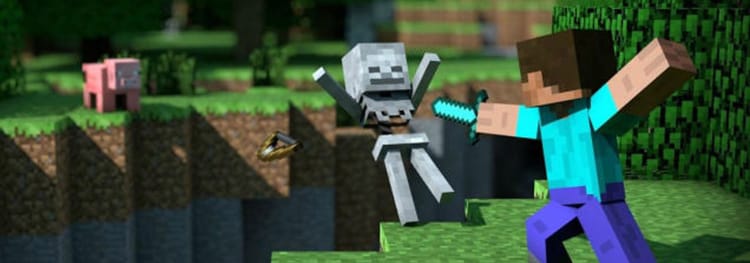Why Planescape: Torment Tempted Us To Find the End of Play

Could you hurt me, sweet lips, though I hurt you?
Men touch them, and change in a trice
The lilies and languors of virtue
For the raptures and roses of vice;
Those lie where thy foot on the floor is,
These crown and caress thee and chain,
O splendid and sterile Dolores,
Our Lady of Pain.
– “Dolores” by A.C. Swinburne
Madame de Saint-Ange: The imagination serves us only when the mind is absolutely free of any prejudice. A single prejudice suffices to cool off the imagination.
-de Sade, Philosophy in the Boudoir
Planescape: Torment begins where fantasy ends. This is true in three respects.
The first and most immediately evident is the merciless reversal of generic conventions. The player character-The Nameless One, an immortal who can be killed but cannot die-awakens from death on a mortuary slab. A walking John Doe, he remembers nothing but is tormented by one burning question: “What can change the nature of a man?” The Nameless One’s first task is to escape the mortuary. Typically fantasy characters are trying to break into some hoary old tomb, not out of it.
These reversals are endemic. Eschewing the usual knightly magic swords, The Nameless One favors the survivalist’s improvised axes, knives and cudgels. The casting notices made clear that elves, dwarves and hobbits need not apply. Instead we meet such topsy-turvy characters as a chaste succubus, a lovesick hag, a loyal vizier, an interventionist angel and a philanthropic devil. Outrageously, Charisma is one of the most important stats: The Nameless One can often achieve far more through parley than force of arms. This is all for the best, as the combat is a bit terrible-the game’s forte lies in its thousands of lines of text, surrealist visual sensibilities and complex audio.
It is when they escape the mortuary that players learn that Planescape: Torment begins where fantasy ends in a second, very literal sense-the ‘Planes’, metaphysical worlds (heavens, hells) each representing a concept or an element. This is where fantasy characters go at the end, when they ‘sail off into the West’ or are banished back to some netherworld. In Planescape all the tropes pile up like so much flotsam. Perched above this wreckage of frozen gestures is Sigil, City of Doors-an anomalous circular burg riddled with enigmatic portals that potentially lead to anywhere in the many dimensions, watched over by the splendid and sterile majesty known as The Lady of Pain.
Planescape: Torment is a deglazed reduction of the already heady Planescape source material, which was pioneered deep in the history of tabletop D&D by designer David ‘Zeb’ Cook and artist Tony DiTerlizzi. Whichever TSR high-up made the decision to pair those two was having a seriously good day in the office. Cook took the D&D legacy cosmology – ramshackle, irresponsible, magnificent – and revivified it in a way that was brilliant but not unprecedented: Planescape is to vanilla D&D what Moorcock’s Dancers at the End of Time (itself a Swinburne reference) is to Tolkein’s The Hobbit.
Why the hell do we keep encouraging all this fantasy rubbish, anyway?
Sigil’s denizens, living as they do at a nexus of realities, hardly care about the perils besetting any one world; this cosmopolitanism is signified by liberal borrowings from Regency Thieves’ Cant. Hapless characters from Game of Thrones or Dragon Age that somehow stumble through a portal to Sigil are called ‘Clueless’ or ‘berks’. Those wise to the ways of the Planes are called ‘cutters’ or ‘bloods’. Money is ‘jink’, knives are ‘shivs’, a bribe is ‘garnish’ and so on. Ultimately though, Sigil’s a joke at our expense: why the hell do we keep encouraging all this fantasy rubbish, anyway?
Given how compulsively sardonic all this is, it’s surprising that The Nameless One never ends up hopping through a Sigilian portal to some ‘Plane of Play’-now that would have been the height of self-reflexivity. Planescape: Torment misses a rare trick here. However, as philosopher Giorgio Agamben points out in his essay ‘In Playland’, we can get some sense of what such a world would be like through Carlo Collodi’s novel The Adventures of Pinocchio.
Pinocchio’s visit to Playland shows a massive acceleration of time: hours, days, weeks and years whirl by in a ceaseless holiday that ‘begins on the first of January and ends the last day of December’. This crumbling up and destruction of the calendar-the sacred signposts by which we organize the passage of time-along with the descriptions of the scene as ‘bedlam’ and ‘pandemonium’ lead Agamben to point out that one only need change the imagery slightly for Playland to take on a hellish tint: ‘Playland, where the hours go by in a flash’ is like ‘infernal time, symbolized by Ixion’s wheel and the toils of Sisyphus’. Playland is full of little devils, and the devils in Bosch’s apocalyptic The Garden of Earthly Delights sure look like they’re having fun.
Imagination is only useful to the libertine if it is free of such unconscious prejudice.
This is the third sense in which Planescape: Torment takes place where fantasy, imagination and play ‘end’: where they are taken to their diabolically logical conclusion. It’s right there in the title:torment. The game’s contemptuous attitude towards the repetitions of genre tells us that the usual view of play-as carefree leisure and self-indulgence, as mere lack of restraint-is in fact only habit, a re-run along those smooth grooves already carved in our being. The far side of play is a discipline that teaches us limitations we never knew we had.
As Madame de Saint-Ange says in Philosophy in the Boudoir, imagination is only useful to the libertine if it is free of such unconscious prejudice. But if eliminating these prejudices were a simple matter the book would be much shorter – she and Dolmancé have to playfully teach their students how to comport themselves towards one another over several chapters of increasing intensity. It’s only by playing it out that you discover how long the leash is. Tension tells us a limb’s true quality. And is it really dom or sub who ‘use’ the safe word? Hard to tell. Perhaps in some strange way it uses them both.
Although it is a commonplace in Sigil that ‘belief can move the Planes’, Planescape: Torment undermines any voluntaristic understanding of this adage. Instead, belief is a wrack: The Nameless One’s curse makes him attractive to doomed souls, whose beliefs mean they are consigned to hell even in life (this is why his quest does not lead to any of the heavens despite the plot device of Sigil allowing for it; nothing in that stock of imagery would be to purpose). The Nameless One meets a multitude of characters who have fallen under the sway of the object of their desire, twisted at the core of their being into some stress position of the soul. Crucially this includes both the antagonist and the very character who first posed the game’s central riddle “What can change the nature of a man?”
So perhaps it’s premature to say that Planescape: Torment doesn’t reflect on play: rather, the game reflects play in the saturnine gaze of The Lady of Pain. The whole game takes place on a ‘Plane of Play’. The Nameless One is at war with his own past incarnations-what in a lesser game would be the other save game states; failed attempts at the quest-who have set traps, curses and misdirections for him. This reflects the way that games enjoin us to ‘Please try again‘, to ‘Do it again, do it differently‘. Planescape: Torment points to why we subject ourselves to these strange disciplinary apparatuses, innumerable tiny calamities, odd temporal lariats and ergonomic heresies: to find ourselves at the end of play.




Comments ()